
Subcarpathian Voivodeship or Subcarpathia Province is a voivodeship, or province, in the southeastern corner of Poland. Its administrative capital and largest city is Rzeszów. Along with the Marshall, it is governed by the Subcarpathian Regional Assembly. Historically, most of the province's territory was part of the Kingdom of Galicia–Volhynia, the Kingdom of Galicia and Lodomeria and the Ruthenian Voivodeship. In the interwar period, it was part of the Lwów Voivodeship.

Wieluń is a town in south-central Poland with 21,624 inhabitants (2021). The town is the seat of the Gmina Wieluń and Wieluń County, and is located within the Łódź Voivodeship.

Sanok is a town in the Subcarpathian Voivodeship of south-eastern Poland with 38,397 inhabitants, as of June 2016. Located on the San River and around 52 km south of Przemyśl, Sanok lies directly by the Carpathian Mountains.

Red Ruthenia, or Red Rus' (Latin: Ruthenia Rubra; Russia Rubra; Ukrainian: Червона Русь, romanized: Chervona Rus'; Polish: Ruś Czerwona, Ruś Halicka; Russian: Червонная Русь, romanized: Chervonnaya Rus'; Romanian: Rutenia Roșie), is a term used since the Middle Ages for the south-western principalities of the Kievan Rus', namely the Principality of Peremyshl and the Principality of Belz. Nowadays the region comprises parts of western Ukraine and adjoining parts of south-eastern Poland. It has also sometimes included parts of Lesser Poland, Podolia, Right-bank Ukraine and Volhynia. Centred on Przemyśl (Peremyshl) and Belz, it has included major cities such as: Chełm, Zamość, Rzeszów, Krosno and Sanok, as well as Lviv and Ternopil.

The Ruthenian Voivodeship, also called Rus’ voivodeship, was a voivodeship of the Crown of the Kingdom of Poland from 1434 until the 1772 First Partition of Poland with a center in the city of Lviv. Together with a number of other voivodeships of southern and eastern part of the Kingdom of Poland, it formed Lesser Poland Province of the Polish Crown, with its capital city in Kraków. Following the Partitions of Poland, most of Ruthenian Voivodeship, except for its northeastern corner, was annexed by the Habsburg monarchy, as part of the province of Galicia. Today, the former Ruthenian Voivodeship is divided between Poland and Ukraine.

Volhynian Voivodeship was a unit of administrative division and local government in the Grand Duchy of Lithuania from 1566 until 1569 and of the Polish Crown within the Polish–Lithuanian Commonwealth from the 1569 Union of Lublin until the Third Partition of Poland in 1795. It was part of the Ruthenian lands in the Lesser Poland Province.

Sanok Land was a historical administrative division unit (ziemia) of the Polish–Lithuanian Commonwealth from the 14th-18th centuries. It consisted of land that now belongs to the powiats (counties) of: Sanok, Brzozów, Lesko and partially Krosno and Rzeszów. Ziemia Sanocka was a part of the Ruthenian Voivodeship with the capital at Lwów.
The starosta or starost is a term of Slavic origin denoting a community elder whose role was to administer the assets of a clan or family estates. The Slavic root of starost translates as "senior". Since the Middle Ages, it has meant an official in a leadership position in a range of civic and social contexts throughout Central and Eastern Europe. In terms of a municipality, a starosta was historically a senior royal administrative official, equivalent to the County Sheriff or the outdated Seneschal, and analogous to a gubernator. In Poland, a starosta would administer crown territory or a delineated district called a starostwo.

Zdzisław Beksiński was a Polish painter, photographer, and sculptor, specializing in the field of dystopian surrealism.

The House of Wiśniowiecki was a Polish-Lithuanian princely family of Ruthenian-Lithuanian origin, notable in the history of the Polish–Lithuanian Commonwealth. They were powerful magnates with estates predominantly in Ruthenian lands of the Crown of the Kingdom of Poland, and they used the Polish coat of arms of Korybut.

Silesian Museum in Katowice is a museum in the City of Katowice, Poland.
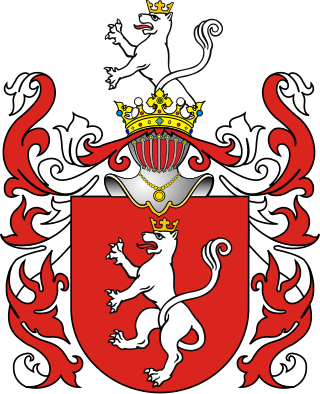
Firlej was a Polish szlachta (nobility) family. Magnates in the 15th and 17th century.
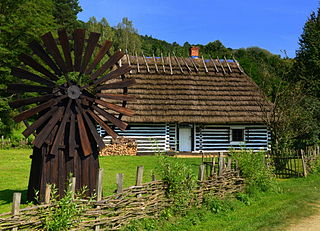
The Rural Architecture Museum of Sanok is one of the biggest open-air museums in Poland. It was established in 1958 by Aleksander Rybicki and contains 200 buildings which have been relocated from different areas of Sanok Land. The Sanok museum shows 19th and early 20th century life in this area of Poland.
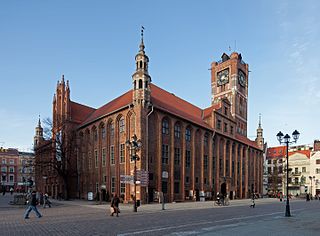
Toruń Regional Museum, located in the Ratusz hall of Toruń, is one of the oldest and largest museums in Poland. It started in 1594 as the mere Cabinet of Curiosities at the library of the academic Gimnazjum, called Musaeum in Latin. Re-established in sovereign Poland as a city museum in 1920 after the century of military partitions, it was administratively structured as the regional museum in 1965.
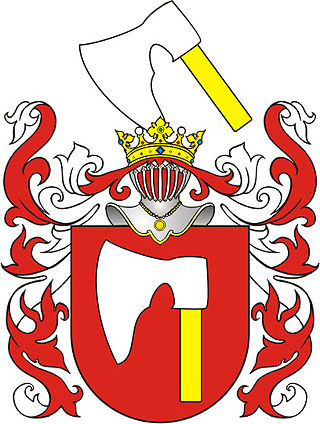
The House of Tęczyński was a powerful family of nobility (szlachta) in the Kingdom of Poland, during the times of the late Piast dynasty, the Jagiellon dynasty and in the early decades of the Polish–Lithuanian Commonwealth. They were an important family from Lesser Poland (Małopolska), active in Polish politics of their time.

Dzików Castle or Tarnowski Family Castle in Dzików is a 15th-century castle located in Tarnobrzeg, Poland. It is set in a park complex with gardens.

The National Museum in Poznań, Poland, abbreviated MNP, is a state-owned cultural institution and one of the largest museums in Poland. It houses a rich collection of Polish painting from the 16th century on, and a collection of foreign painting. The museum is also home to numismatic collections and a gallery of applied arts.
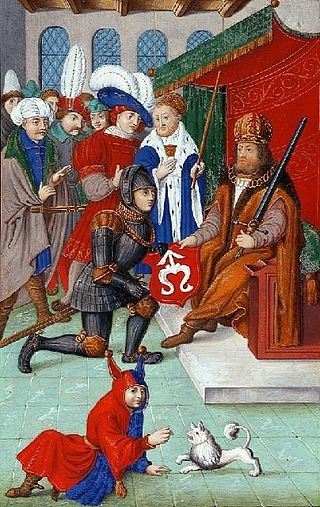
Odrowąż was an important family of knights in the medieval Kingdom of Poland, strongly allied with the Catholic church in the 12th century.

Sobień – Medieval castle in the San river valley, at the feet of Eastern Carpathian mountains, in the Manasterzec village in Lesko County, Subcarpathian Voivodeship.























